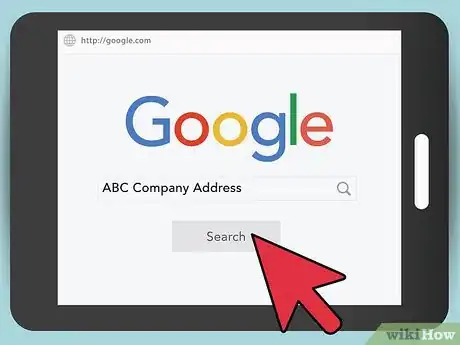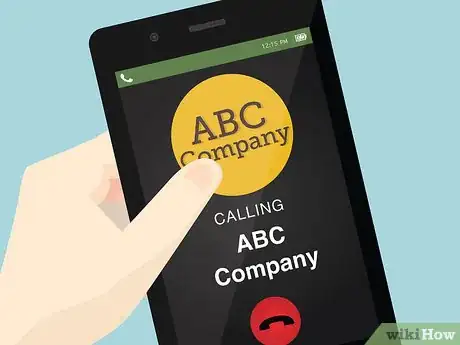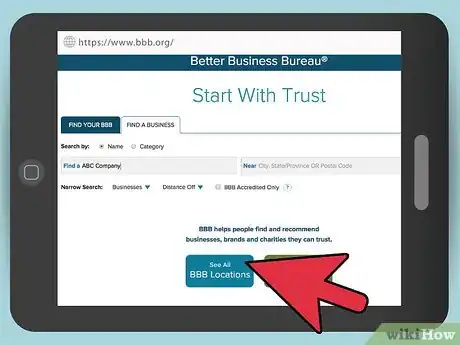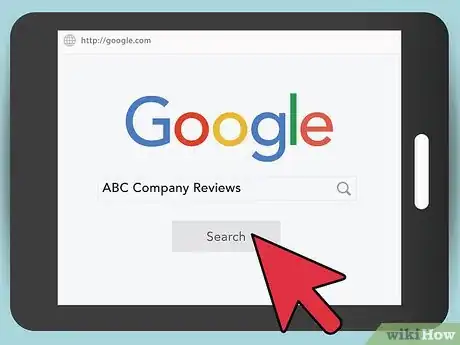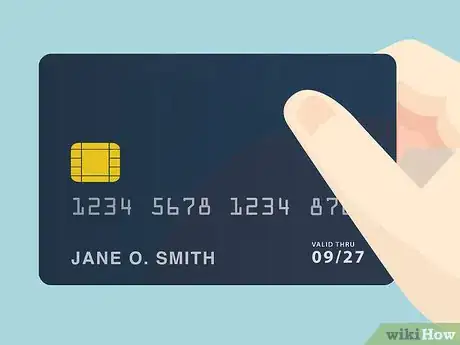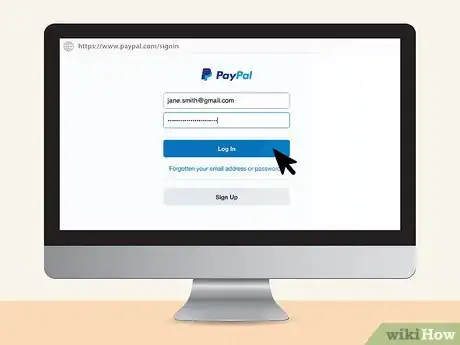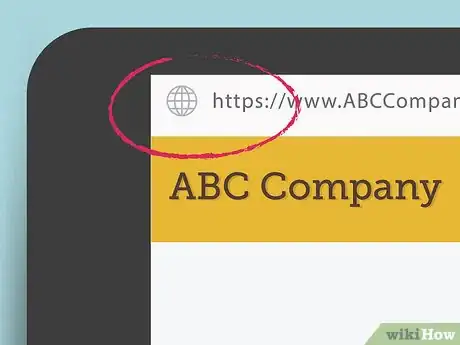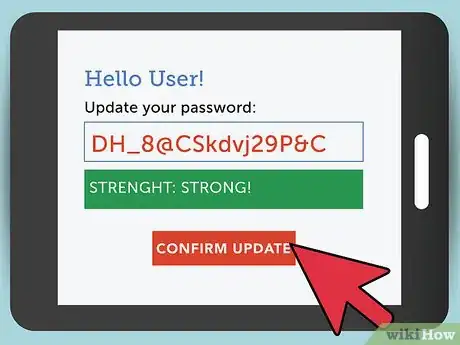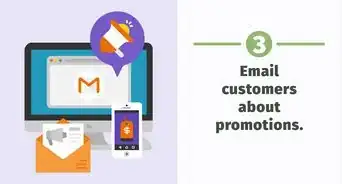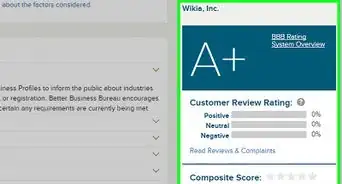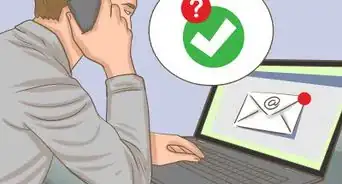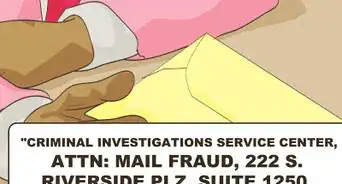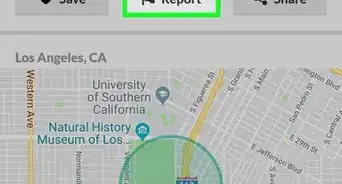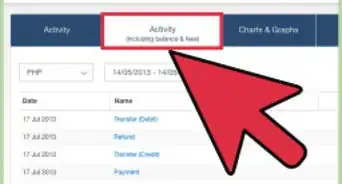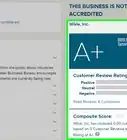This article was co-authored by Michael R. Lewis. Michael R. Lewis is a retired corporate executive, entrepreneur, and investment advisor in Texas. He has over 40 years of experience in business and finance, including as a Vice President for Blue Cross Blue Shield of Texas. He has a BBA in Industrial Management from the University of Texas at Austin.
There are 7 references cited in this article, which can be found at the bottom of the page.
This article has been viewed 272,298 times.
Scammers are always looking to make a quick buck off of you online. Although this is a sad fact of life, it is also possible to be proactive in finding out if a business is legitimate. If you feel like a business isn't legitimate, it's always better to be safe than sorry by not buying from that company.
Steps
Looking for Signs of a Bad Business
-
1Look for a key or padlock icon in your browser's address bar. Legitimate online stores and sites that store personal information will have a closed padlock or key in the address bar portion of your web browser (the bar at the top where you type in the website's address). This symbol means that the connection with the website is encrypted and your information is secure. Some browsers may also show the address bar as green for these websites. Avoid sites where the address bar is red, the padlock is shown as open, or the key is broken. This signifies an unsecured connection.[1]
-
2Check for a physical address. Even online businesses should have physical addresses. If the website you are looking at doesn't appear to have a physical address or contact information at all, that's suspicious. You should be able to contact the business in case of trouble.
- Choosing a website based in the US can help you to avoid scammers who work in other countries. When scammers are in other countries, it can be harder to follow up with the law.
- To determine the location of the website, use an IP-checker website like check-host.net or get-site-ip.com. The website's country and, in some cases, specific location, will be shown.
Advertisement -
3Check for professionalism. While a professional-looking website does not mean it's legitimate, a very unprofessional website is a sign it could be a scam. Look for spelling mistakes, loading errors, and poor-quality pictures. If you notice these signs, you may want to investigate further or not use that company at all.
-
4Avoid sites with a lot of pop-up ads. Legitimate business generally avoid placing pop-up ads that open new tabs or windows without your permission on their websites. This is because such ads drive away business and make their websites seem unprofessional. If you come across a website with this type of ad, don't input any personal information or buy anything. And don't click on the pop-up ads; just close them as quickly as possible.[2]
Checking Up on the Company
-
1Call the business. If the business has a number listed, call the number. See if they answer as the business and sound professional. If they do, this doesn't necessarily mean they are legitimate. However, if they don't, that's a sign you should take your business elsewhere.
-
2Check the company's address. The company must do business in a particular state. Most states require companies to register their business with the state. Therefore, you can use the registry in your state to check to see if it's an actual business.
-
3Search the Better Business Bureau. The Better Business Bureau gives reports on businesses, partially based on reviews reported by customers like you. Not every business is listed, but you can find out more information about your business if it is, such as what kind of rating it has. The Better Business Bureau gives out grades, much like a teacher on a paper.[3]
- For instance, a very good business will have an A+. A very bad business will have an F. A business that has a B or a C may be a legitimate business, but it may not offer very good customer service or it may have other problems.
-
4Look for online reviews. While reviews can be faked, if a business is bad or even a scam, you should be able to find bad reviews about it. Check major review sites, which offer reviews of even online businesses. Check to make sure people aren't saying the business is bad or is a scam.[4]
-
5Ask friends and family. Check around with your friends and family. See if any of them have used the business before and what their experience is with the business. Oftentimes, someone you know will have used the business, and they can confirm it is legitimate.
- A quick way to check is to use social media. Post the name of the online business on your account, for instance, and ask your friends if anyone knows anything about the company.
Protecting Yourself
-
1Never wire money. If a business sends you an error message for your payment, your natural inclination is to want to figure out another way to pay. However, if the company asks you to wire money instead, that's a red flag. Stop right there, and ignore any further messages from the company.
-
2Use a credit card. Credit cards offer more protections than if you use your bank account or debit card. Therefore, if you make a purchase with your credit card and the company is fraudulent, you may have an easier time getting your money back or cutting the card off.
-
3Use a payment mediator. Another option is using a payment mediator instead, such as PayPal. These services are designed to protect your information from those who may want to steal it. PayPal accounts are free to setup and use if you are using them to buy goods online (the company only charges fees to sellers and international money transfers).
-
4Check for the "s." When on a website where you're giving your personal info, look for the "s" after the "http." In other words, it should be "https://" This "s" means your personal information is more secure than on sites that don't have it. The "s" refers to the secure socket layer and that communication between your browser and the website is encrypted.[5]
- Also, look for a tiny padlock when you are checking out. It should be in the bottom, right-hand corner.
- Alternatively, the website might have a statement about how the website is secured.[6]
-
5Don't give out personal information. If the company sends you an email asking for personal information, do not send it to them. Legitimate companies will never ask for things like your password, your social security number, or your credit card number through email.[7]
-
6Update your computer and smartphone software and hardware. Keeping your technology up-to-date is important, as often these updates are related to security. Therefore, whenever your computer or phone asks you to update your software, you should do so.[8]
- However, never click on a part of a website or popup from the internet that tells you to update, as often times these are a scam to infiltrate your computer with a virus. Make sure it is actually your computer software asking you for the update.
-
7Make strong passwords. Use strong passwords with your financial information. Strong passwords are longer than 8 characters and have at least letters and numbers. Some companies also let you add special characters. Don't use the same passwords on all sites, even legitimate ones, since a hacker could easily break into one account after another if they get one of your commonly-used passwords.[9]
- One way to create a strong password is to think of a phrase that you can remember, such as "I like blueberry pie for dinner." Start replacing things in the phrase with other things. For instance, you could replace some of the words with the number of letters in the word, such as "Ilike9336."
- Alternatively, you could replace some of the words with special characters, representing the number of letters in the word but using the symbol on the keyboard in place of the number. For instance, "Like" has 4 letters. You could use the symbol "$" in place of it, because it shares a key with the number 4. Your phrase, then, might look something like this: "!$(#4dinner." Just make sure you can remember or keep it in a secure location.
-
8Don't be fooled by phishing. Phishing is when a scammer poses as a legitimate website to steal your information. If you get an email from a company you trust, make sure it is actually from them by looking at the email name. Also, when you click on the link, make sure it has the company at the top. Often, it's safer just to put in the company's website yourself if you need to update information.[10]
References
- ↑ http://us.norton.com/yoursecurityresource/detail.jsp?aid=secure_shopping
- ↑ http://us.norton.com/yoursecurityresource/detail.jsp?aid=secure_shopping
- ↑ https://www.bbb.org/
- ↑ https://www.qld.gov.au/law/your-rights/consumer-rights-complaints-and-scams/consumer-advice-rights-and-responsibilities/avoiding-unfair-business-practices-as-a-consumer/knowing-if-a-business-is-legitimate/
- ↑ https://www.bankofamerica.com/deposits/manage/online-security-tips.go
- ↑ http://home.mcafee.com/advicecenter/?id=ad_ost_tohtpyo&ctst=1
- ↑ https://www.bankofamerica.com/deposits/manage/online-security-tips.go
- ↑ https://www.bankofamerica.com/deposits/manage/online-security-tips.go
- ↑ https://www.bankofamerica.com/deposits/manage/online-security-tips.go
About This Article
If you want to know if an online company is legitimate, start by trying to find a physical address and contact information on their website, since you should be able to contact the business if there is an issue. Also, if the site has spelling errors or low-quality images, it could be a sign that the company is not legitimate. Finally, search online to find reviews of the company and be cautious if some say the business is bad or that it’s a scam. For tips from our Financial reviewer on how to safely pay for things online, read on!

